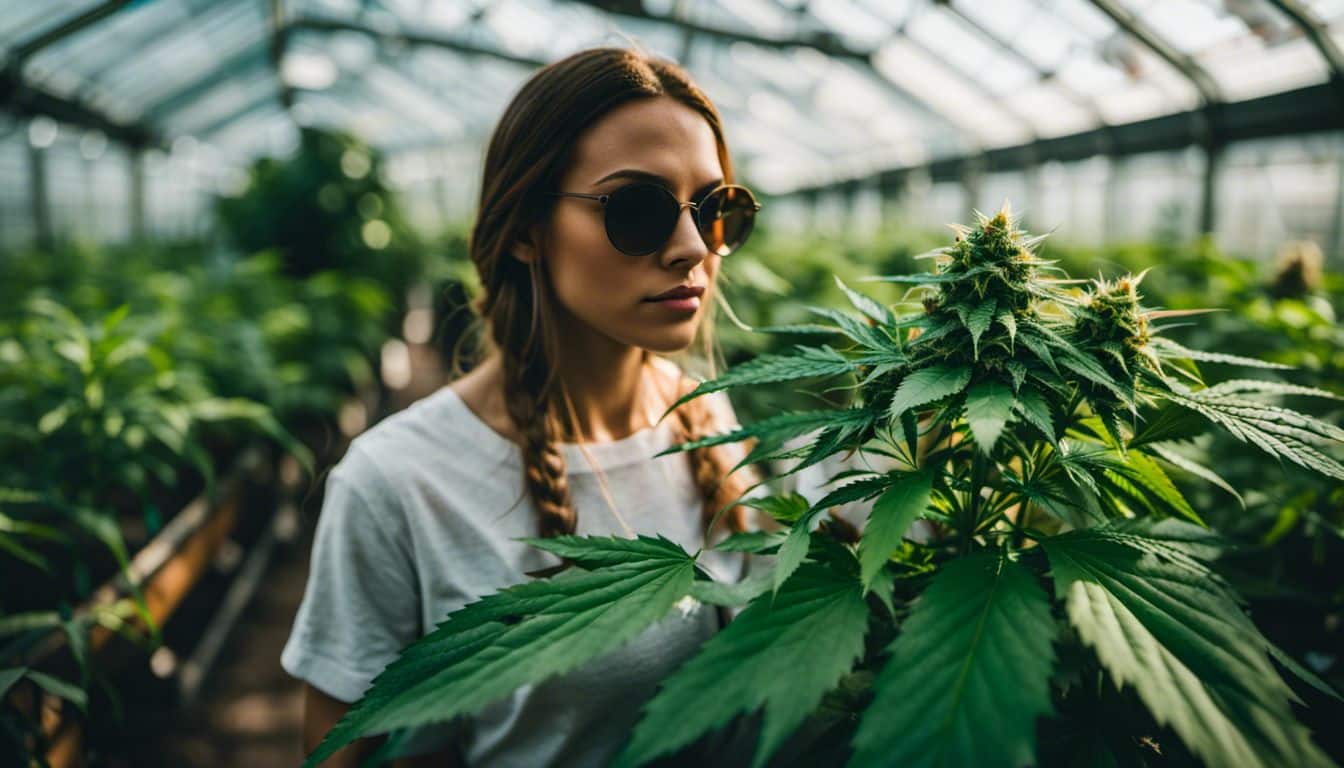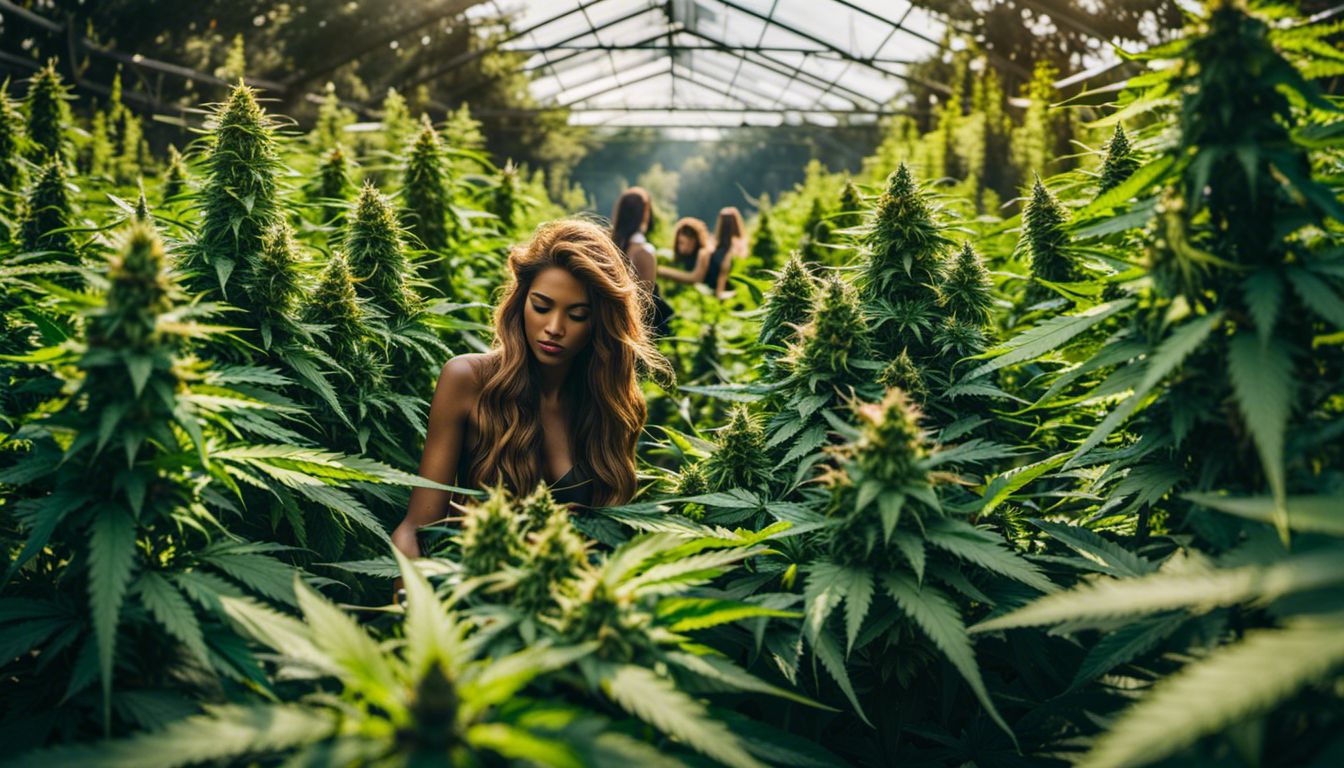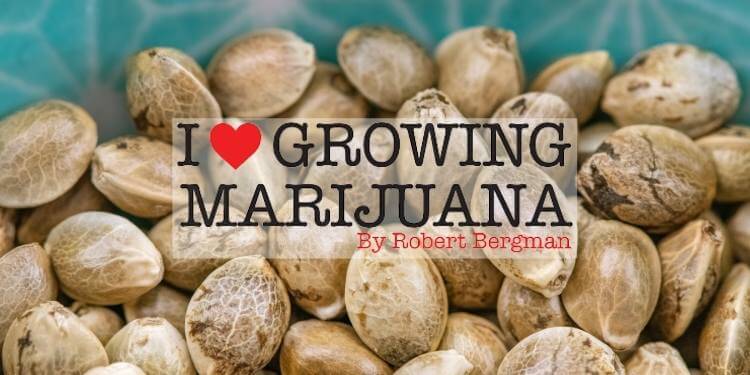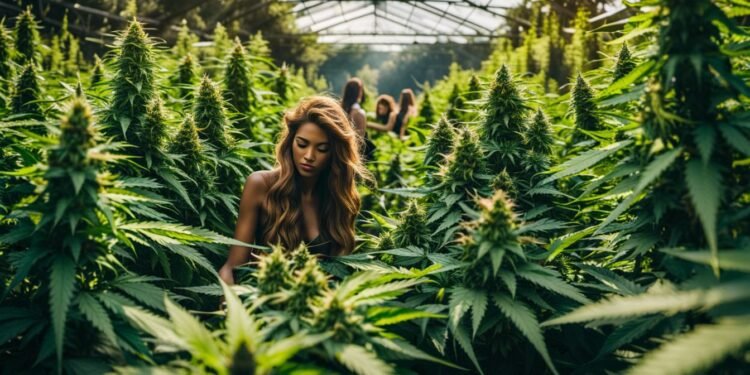Are you curious about the world of cannabis cultivation and its different approaches? One practice that has caused significant debate is the use of Plant Growth Regulators (PGRs) in growing cannabis.
This article will shed light on what PGR cannabis is, how it’s produced, and potential health risks associated with consuming this variety. Ready to get enlightened? Let’s dive deeper!
Key Takeaways
- PGR cannabis refers to cannabis that has been cultivated using synthetic plant growth regulators, which can alter the growth patterns and structure of the plants.
- Synthetic hormones used in PGR cannabis cultivation can lead to lower levels of terpenes and cannabinoids, affecting the potency and therapeutic effectiveness of the final product. There are also potential health risks associated with consuming PGR weed, such as organ damage.
- Physical characteristics like dense buds, unnatural colors, and an overly shiny appearance can help identify PGR cannabis. It lacks trichomes, has a different texture and aroma, and may have altered cannabinoid content compared to natural cannabis.
- PGR cannabis is currently illegal in the United States due to health concerns. Consumers should consider exploring organic weed options or using natural hormones for cannabis growing as alternatives to synthetic plant growth regulators.
What is PGR Cannabis?

PGR Cannabis is a term used to describe cannabis that has been cultivated using synthetic plant growth regulators, or hormones.
Definition of PGR Cannabis
PGR Cannabis refers to the type of cannabis grown using Plant Growth Regulators (PGRs) – synthetic hormones that modify plant growth. These substance are often used by cultivators to control development, improve plant appearance and increase yield.
Essentially, PGR weed or PGR buds denote marijuana cultivated with the aid of these synthetic hormones, resulting in altered growth patterns and an unnatural but dense bud structure.
Use of synthetic hormones
Synthetic hormones play a pivotal role in the production of PGR cannabis. Many cannabis growers utilize these hormones to expedite growth and enhance visual appeal. These man-made compounds, known as synthetic plant growth regulators or synthetic PGRs, manipulate the natural development processes inside the plants.
With frequent use, however, there emerges a significant drawback: quality degradation. Strains grown with PGRs often contain lower levels of terpenes and cannabinoids – two key components that define potency and therapeutic effectiveness in medical marijuana.
Another concern arises from potential contamination by harmful chemicals present within these synthetic hormones, which can pose serious health risks such as organ damage upon consumption.
How is PGR Cannabis Made?
PGR Cannabis is made using common nutrients and synthetic PGRs in cannabis grow rooms.
Common nutrients used
Understanding the components of cannabis cultivation helps discern the quality of the final product. Let’s delve into the commonly used nutrients in PGR cannabis:
- Nitrogen: This element supports the growth of leaves during a cannabis plant’s vegetative stage.
- Phosphorus: Cannabis cultivators often use this nutrient to promote healthy root development and flowering.
- Potassium: As an essential nutrient, potassium aids in protein synthesis and the regulation of photosynthesis.
- Calcium: Its primary role involves improving cell wall structure, thus enhancing overall plant strength.
- Magnesium: Crucial for chlorophyll production, magnesium facilitates effective photosynthesis.
- Sulfur: This nutrient assists in producing vital amino acids, proteins, enzymes and vitamins.
- Iron: Often utilized as a micro-nutrient, it fosters leaf growth and promotes vibrant coloring.
Synthetic PGRs used in cannabis grow rooms
Cannabis cultivators commonly use synthetic plant growth regulators (PGRs) in grow rooms to manipulate the growth and structure of cannabis plants. These artificial hormones help increase yields and produce bigger buds. Synthetic PGRs are especially popular because they can shorten branches, resulting in a more compact and sturdy plant. Compared to natural PGRs, synthetic PGRs are more commonly used by cannabis growers worldwide.
Health Risks and Concerns of PGR Cannabis
PGR Cannabis poses several health risks and concerns, including short-term effects such as skin and eye irritation, as well as long-term effects like organ damage. Consumers should be aware of the potential dangers associated with using PGR Cannabis for medical or recreational purposes.
Short-term effects
Exposure to PGR cannabis can have short-term effects on your health. Breathing in or ingesting this type of weed may lead to respiratory issues, nausea, and vomiting. Additionally, it can cause skin and eye irritation.
These acute health concerns are a sign that the synthetic hormones used in PGR cannabis cultivation may not be safe for human consumption. It is important to be aware of these potential risks before using PGR cannabis products.
Long-term effects
PGR cannabis, which is grown using synthetic plant growth regulators (PGRs), can have significant long-term effects on both the environment and human health. Studies have shown that prolonged exposure to PGR weed may result in organ damage, particularly to the lungs, liver, and reproductive system.
The chemicals used in synthetic PGRs have been linked to an increased risk of cancer and may cause irreversible lung damage over time. Additionally, these substances can lower antioxidant and amino acid levels in the body, leading to potential nutrient deficiencies.
It is important for cannabis cultivators and consumers alike to be aware of these long-term effects when considering their choices regarding cultivation and consumption practices.
Safety for consumers
Consumers need to prioritize their safety when it comes to consuming cannabis. PGR weed is associated with adverse health issues and can make you sick. It’s important to be aware that PGRs have well-known safety risks, including potential organ damage, cancer, and fertility issues.
That’s why it’s crucial to ensure the cannabis you consume is free from harmful chemicals or bacteria. Prioritizing your health and safety means avoiding PGR weed and opting for cannabis products that are grown using natural methods.
How to Identify PGR Cannabis
To identify PGR cannabis, look for physical characteristics such as dense and compact buds, unnatural colors, and an overly shiny or oily appearance. These traits are often a telltale sign that synthetic plant growth regulators have been used in the cultivation process.

Physical characteristics of PGR weed
PGR weed has distinct physical characteristics that set it apart from natural cannabis. These characteristics can help you identify whether a cannabis plant has been grown using synthetic plant growth regulators. Here’s what to look for:
- Denser and heavier buds: PGR marijuana buds are known for being denser, harder, thicker, and heavier compared to those of natural cannabis. They have a more compact appearance and feel.
- Less crystal content: PGR cannabis leaves typically have fewer crystals, which contain terpenes and cannabinoids, compared to the leaves of natural cannabis. This can affect the potency and aroma of the final product.
- Unnatural shape: The shape of PGR weed can be different from natural cannabis plants. They may appear more symmetrical or have an unnatural-looking structure due to the manipulation caused by synthetic hormones.
- Less vibrant color: Natural cannabis usually exhibits vibrant shades of green, while PGR weed may have a duller or less pronounced coloration.
Differences from natural cannabis
PGR cannabis has distinct differences compared to natural cannabis. These differences include:
- Lack of Trichomes: PGR weed lacks the trichomes that are commonly found on natural weed. Trichomes are the resinous glands that contain terpenes and cannabinoids, which give cannabis its distinct aroma and effects.
- Appearance of Buds: PGR weed buds have a dense appearance, but not in a desirable way. They can appear tightly packed, compacted, and lack the fluffy structure typically seen in natural cannabis buds.
- Color and Texture: PGR buds may have an unnatural color and texture. They can often be darker or pale in color and have a dry or brittle texture, indicating potential use of synthetic plant growth regulators.
- Cannabinoid Content: The cannabinoid content of PGR weed may differ from natural weed. It is believed that PGR cultivation methods can alter the levels of cannabinoids such as THC and CBD in the plant.
- Aroma and Taste: PGR cannabis tends to have a different aroma and taste compared to natural cannabis. The characteristic smells and flavors associated with specific strains may be diminished or altered in PGR weed.
Legality and Commonality of PGR Cannabis in the United States
PGR cannabis is currently illegal in the United States due to health concerns and potential harm to consumers.
Legal status
In the United States, the legal status of PGR cannabis is complex and varies from state to state. Synthetic plant growth regulators (PGRs) are banned for use on food crops in many countries and states, including the United States.
However, when it comes to cannabis cultivation, regulations differ. While some states have strict laws against the use of synthetic hormones like PGRs in cannabis production, other states may not have explicit regulations or enforcement measures in place.
It’s important for cannabis cultivators and consumers to be aware of these varying legalities surrounding PGR cannabis to ensure compliance with local laws and regulations.
Frequency of PGR cannabis use
The frequency of PGR cannabis use is influenced by the legality and commonality of PGR cannabis in the United States. As the commercialization of recreational marijuana continues to expand, more people may be exposed to PGR cannabis.
This means that individuals who consume marijuana products are more likely to come across cannabis cultivated with synthetic plant growth regulators (PGRs). The debate surrounding the use of PGRs in cannabis cultivation has raised concerns about potential health risks and environmental impacts, making it essential for consumers to be able to identify and avoid PGR cannabis for their well-being.
Potential Alternatives to PGR Cannabis
Consider exploring organic weed options and using natural hormones for cannabis growing instead of relying on synthetic plant growth regulators.
Organic weed
Organic weed, also known as natural cannabis, is a safer and healthier alternative for cannabis consumers. Unlike PGR cannabis, organic weed is grown without the use of synthetic chemicals or plant growth regulators (PGRs).
It is cultivated using natural methods and nutrients that promote the plant’s growth and development without compromising its quality. By choosing organic weed, you can enjoy a more natural product that is free from harmful substances and provides a cleaner experience.
Plus, organic cultivation practices are better for the environment as they reduce chemical pollution in soil and water sources. So if you’re looking for a purer and more sustainable option, consider trying organic weed.
Natural hormones for cannabis growing
Natural hormones provide an alternative to synthetic PGRs in cannabis cultivation. These hormones can be applied to the plants to modify their growth and development, without the need for synthetic additives. This approach allows cannabis cultivators to grow plants naturally, without relying on artificial substances. Natural hormones offer a safer and more organic method of achieving desired plant characteristics, while still ensuring a high-quality cannabis product. By using natural hormones, growers can maintain the integrity of the plant’s terpenes and cannabinoids, providing consumers with a more natural and authentic experience.
Conclusion
In conclusion, PGR cannabis refers to cannabis plants that have been grown using synthetic plant growth regulators. These regulators are used by cultivators to modify the growth of the plants and increase yield.
However, there are health concerns regarding the use of PGRs in cannabis cultivation, as they may have negative effects on both the plants and consumers. It is important for individuals to be aware of these risks and consider alternative options such as organic weed or natural hormones for growing cannabis.
FAQs
1. What is PGR cannabis?
PGR cannabis refers to marijuana that has been cultivated using plant growth regulators (PGRs). These are chemicals used to manipulate the growth and development of plants, including cannabis.
2. How does PGR cannabis differ from regular cannabis?
PGR cannabis is typically grown with the use of synthetic chemicals that can alter the natural growth patterns of the plant. This can result in unnaturally dense buds and an overall unnatural appearance compared to organically grown or traditionally cultivated marijuana.
3. Are there any health risks associated with consuming PGR cannabis?
There is growing concern among experts about potential health risks associated with consuming PGR cannabis. Some studies suggest that prolonged exposure to certain PGRs may have negative effects on human health, although more research is needed to fully understand these risks.
4. How can I identify if my cannabis has been treated with PGRs?
Identifying whether your cannabis has been treated with PGRs can be challenging without proper testing equipment. However, some visual indicators include excessively dense buds, an unnatural green color, and unusual leaf structure. It’s always best to purchase from reputable sources or grow your own organic marijuana to avoid potential exposure to PGR-treated products.









